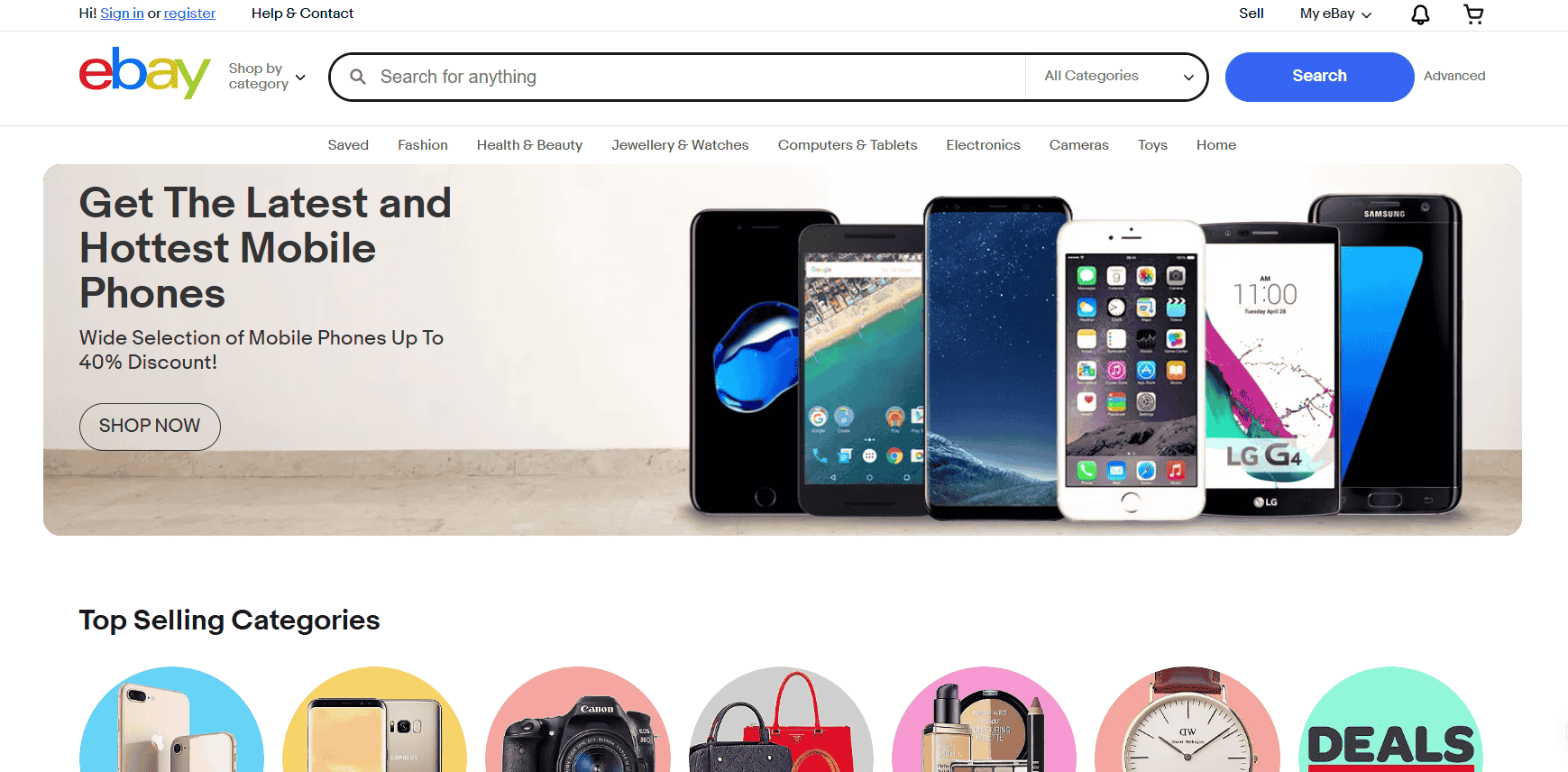If you’re thinking of starting an online store this year, chances are you’ve already Googled things like “best ecommerce niche” or “profitable online store ideas.”
And maybe you noticed a pattern: everyone is selling the same stuff. Skincare, athleisure, tech gadgets. You scroll through ads, influencer videos, and trending lists, and it feels like you’re already late to the party.
The good news is you’re not. You just need to stop chasing oversaturated markets and start looking where others aren’t. That means low competition niches, those hidden pockets of opportunity where demand is bubbling quietly beneath the surface.
-
Low competition niches offer high demand with fewer sellers, making it easier to stand out and grow your online store.
-
Successful online stores focus on specific audiences and unmet needs instead of chasing saturated product trends.
-
Tools like Google Trends, Ubersuggest, and social platforms can help identify untapped ecommerce opportunities.
-
Niches like sensory toys for adults, eco-friendly pet supplies, and discreet health products are thriving in 2025.
-
Building a brand in a low competition niche allows you to scale faster without needing a massive marketing budget.
These are the kinds of niches most people overlook because they’re not flashy or trending (yet), but they have loyal buyers, low advertising costs, and enough breathing room to build a brand that actually lasts.
In fact, some of the most profitable ecommerce stores I’ve helped build didn’t start with trending products. They started in low competition spaces, places where the founder could stand out by simply solving a real need no one else was paying attention to.
And in 2025, with ad costs rising and generic product fatigue setting in, finding a low competition niche might be the smartest move you’ll ever make.
What Is a Low Competition Niche?
A low competition niche is a product category with decent demand but relatively few sellers, weak brand dominance, and little to no price war. Unlike saturated niches where everyone’s fighting for the same keywords and ad space, a low competition niche gives you room to breathe and grow.
Think about it this way: if you open a coffee shop on a street with five other coffee shops, you’re going to have to shout just to be heard. But if you open a coffee shop in a neighborhood that doesn’t even have a decent brew yet, people will naturally gravitate toward you, especially if your offer is thoughtful, high quality, and tailored to them.
Low competition doesn’t mean low quality or low profit. It means smarter positioning. It means entering a market where your brand story, your product packaging, or even your customer service can stand out. Think “strategic underdog,” not “desperate bargain bin.”
You’re not trying to beat the giants at their own game. You’re picking a game they didn’t even bother to play. And that, in ecommerce, is how you win early and scale steadily.
How Do You Identify a Low Competition Niche?
The secret lies in doing what most sellers skip, which is real research. And I don’t mean scrolling TikTok and picking whatever product shows up three times in a row. You’re not just looking for “cool” or “aesthetic” products. You’re looking for signs of life—buyer demand—without the digital stampede of competition.
Start by looking for keywords that have high search volume but low paid difficulty. You can use tools like Ahrefs or Ubersuggest to spot these. They’re basically the online version of a busy street with cheap rent. Lots of foot traffic, but no one’s fighting over the space yet.
Next, check if the product has consistent interest on Google Trends. You’re looking for steady or growing interest over time, not just a one-month spike.
If you can pair that with a quick scan on Amazon or Etsy and see barely any sponsored listings, you’re in a sweet spot. People are searching, but no one’s aggressively selling.
And don’t underestimate the power of social listening. Go on Reddit, Facebook, or TikTok and look at what people are talking about.
If they’re asking for product recommendations, sharing DIY hacks, or complaining about what’s currently on the market, that’s your opportunity. It means there’s demand, but no one is serving it well.
When one of my clients decided to niche down into sensory tools for adults, they weren’t chasing a trend. They were answering a real need. No big brands were dominating the space. TikTok videos featuring desk toys and anxiety relievers had racked up millions of views.
People were hooked on the idea, but had nowhere to buy something premium. So they stepped in. They built a clean Shopify store, branded it like a lifestyle brand (not a gimmick), ran low-budget TikTok ads, and hit $8,000 in sales in their first month.
That’s the power of identifying a low competition niche. You’re not trying to outspend the giants. You’re slipping in quietly where they’re not even looking.
Top Low Competition Niches for Online Stores in 2025
Below are the most promising niches this year. They’re in high demand not just based on gut feel, but on search trends, platform gaps, and emerging consumer behaviors. These are smart, low competition ecommerce niches with proven potential and room to grow.
1. Pet Memorial Products
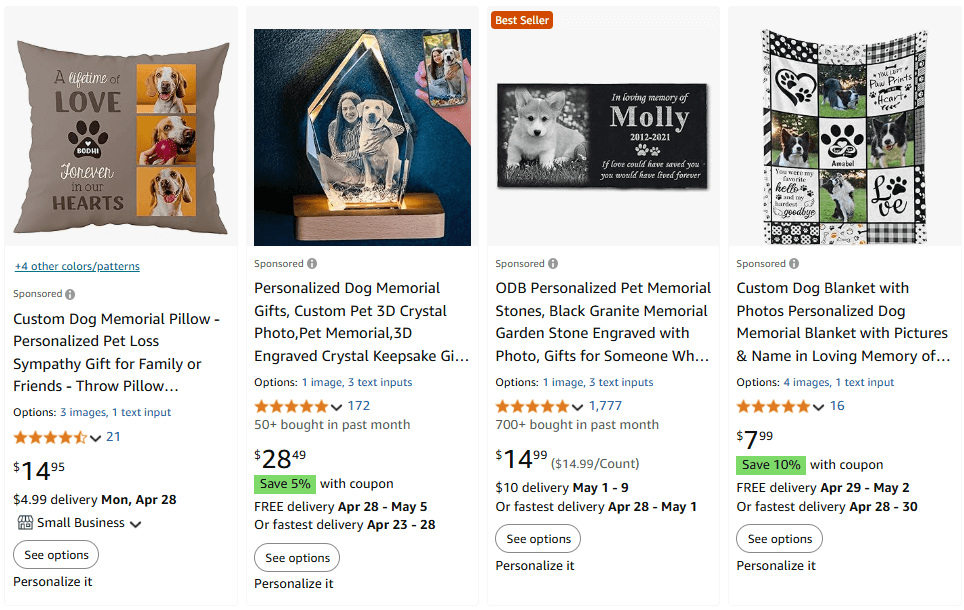
This niche strikes a powerful emotional chord. When people lose a beloved pet, they don’t just want to move on; they want a way to honor the bond. That’s why products like custom urns, paw print jewelry, and framed name plaques are growing in demand.
While general pet supplies are oversaturated, this heartfelt sub-niche is still surprisingly quiet. You’re not selling a product here. You’re helping someone grieve, heal, and remember. And that makes your store more than just another listing.
2. Sensory Toys for Adults
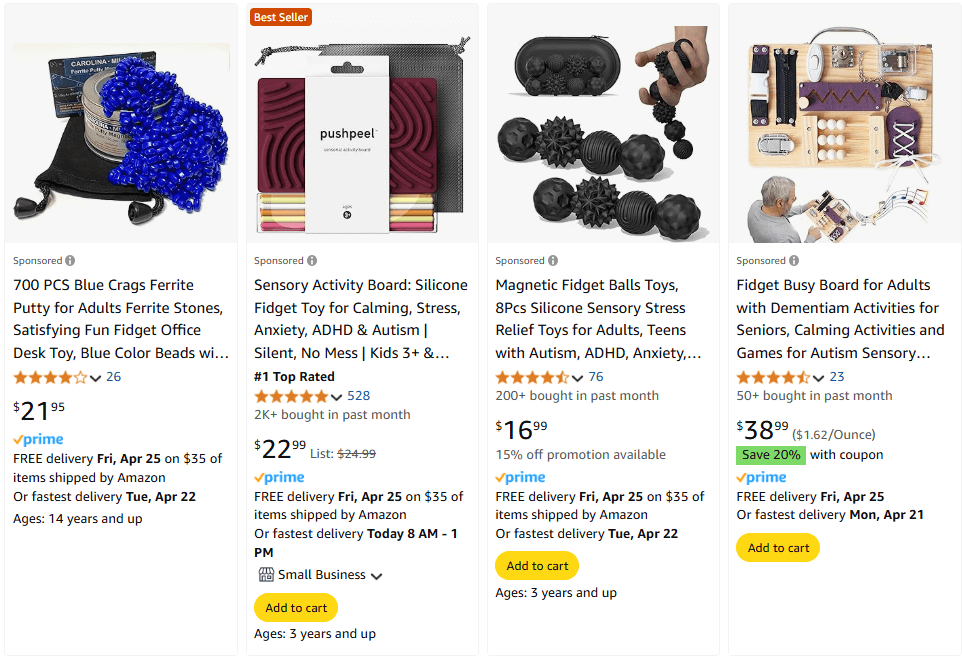
It might sound like a novelty, but sensory products for adults are having a serious moment. With the rise of mental health awareness and neurodivergent communities finding space online, tools like kinetic sand, magnetic desk sculptures, and fidget cubes are blowing up.
Most sellers still focus on kids, which leaves adult consumers hunting for products that are functional and mature-looking. If you design or curate with that in mind, you’re entering a niche that’s both impactful and underserved.
3. Cottagecore Home Decor
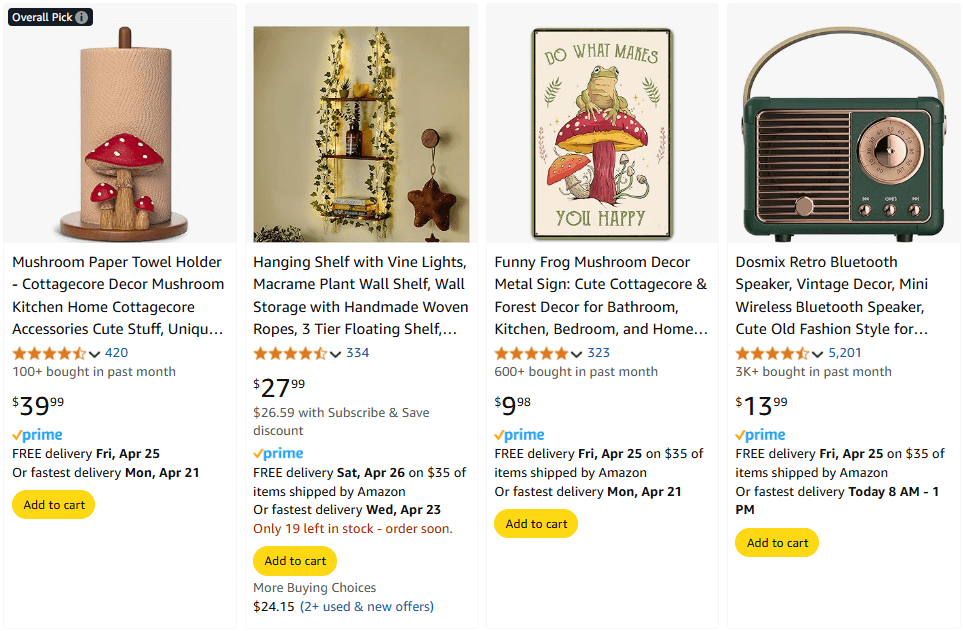
Beyond being aesthetic, cottagecore is a visual escape from chaos. Embroidered linens, ceramic toadstools, vintage candle holders, and delicate lace curtains are props in a lifestyle fantasy.
While it’s everywhere on TikTok and Pinterest, mainstream ecommerce has yet to fully embrace it. And from what I’ve seen with one seller I worked with who launched a nature-themed candle line, once you tap into that audience’s vibe, they’re incredibly loyal.
4. Discreet Health & Wellness Products
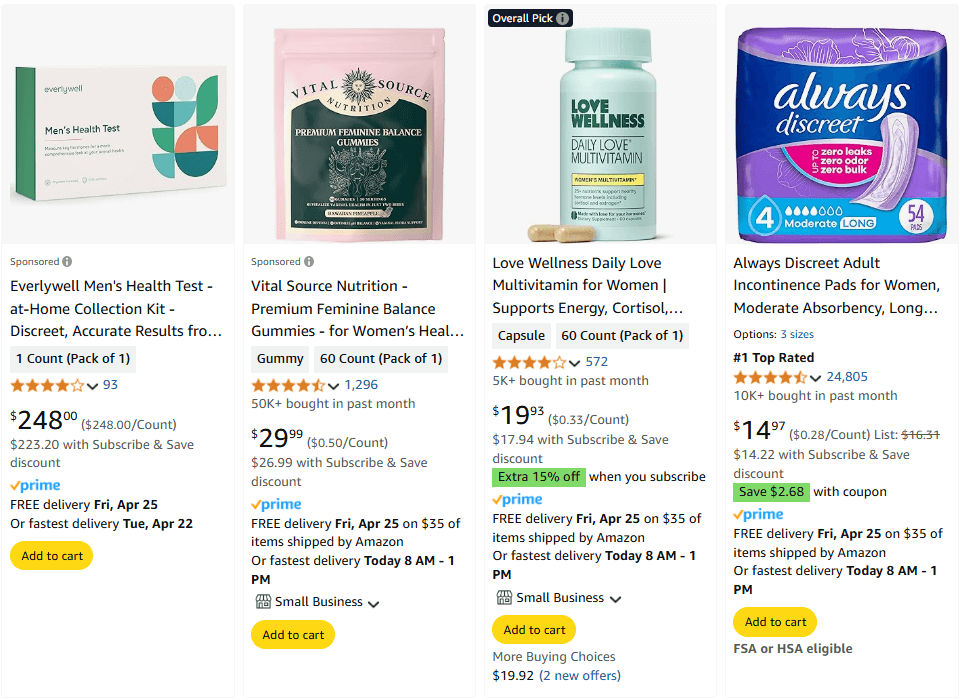
There’s growing interest in quiet, natural alternatives to daily health issues. Things like menstrual relief patches, posture trainers, sleep aid stickers. These products don’t scream for attention, but they solve real, everyday problems.
Plus, they’re small, lightweight, and low-friction to ship, perfect for a lean online store model. Most of these aren’t heavily advertised, which makes it easier for your ads or content to stand out without spending a fortune.
5. Eco-Friendly Pet Supplies
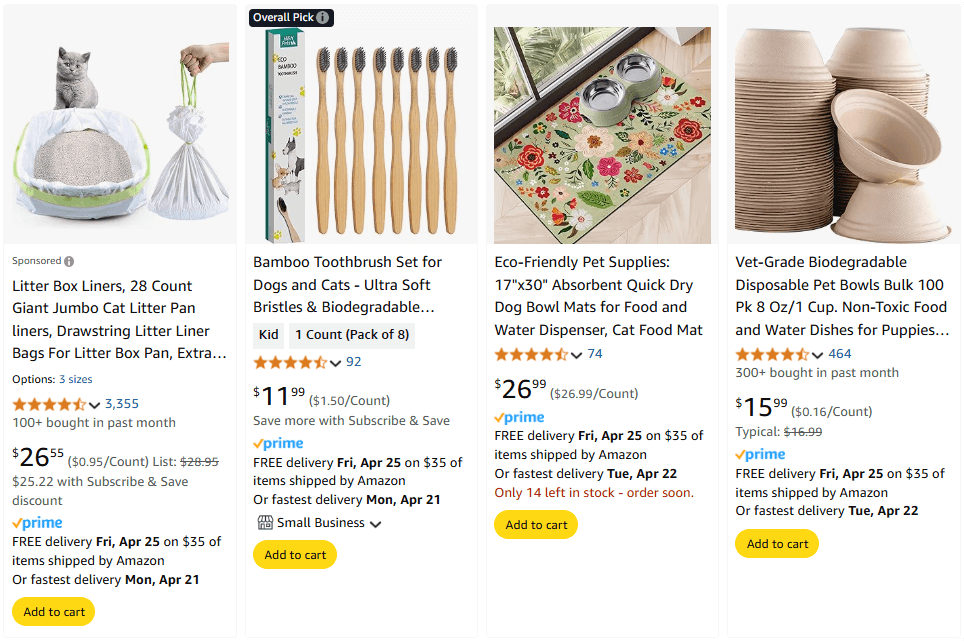
With 73% of millennials willing to pay more for sustainable products, this niche is a goldmine. Combine the pet market (a $147 billion industry globally) with sustainability, and you’ve got something powerful.
Compostable poop bags, refillable pet shampoo bars, bamboo grooming brushes. All of these are gaining traction. Yet most major pet brands are slow to adapt. This is where small sellers can swoop in and win on value and product quality.
6. Travel Gear for Digital Nomads
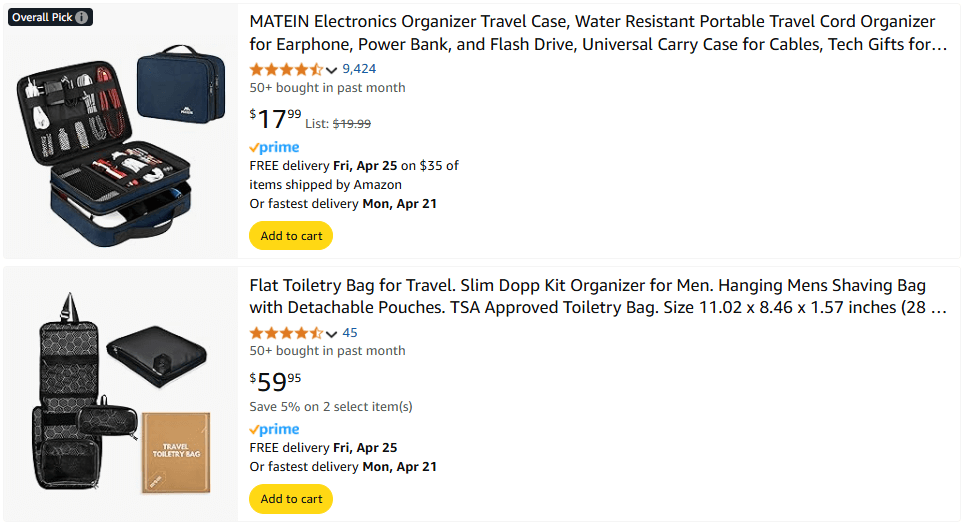
Remote work is no longer a trend. It’s a lifestyle. The “work-from-anywhere” crowd is growing, and they’re hungry for products that make their setup more portable and ergonomic. Foldable keyboards, laptop stands, WiFi boosters, privacy filters—these items aren’t new, but most listings lack real branding.
One of my clients who sold portable tech pouches repositioned them as “remote work survival kits” and doubled their sales. That’s what this niche is about: branding the essentials for a very specific kind of buyer.
7. DIY Herbal Remedies & Kits
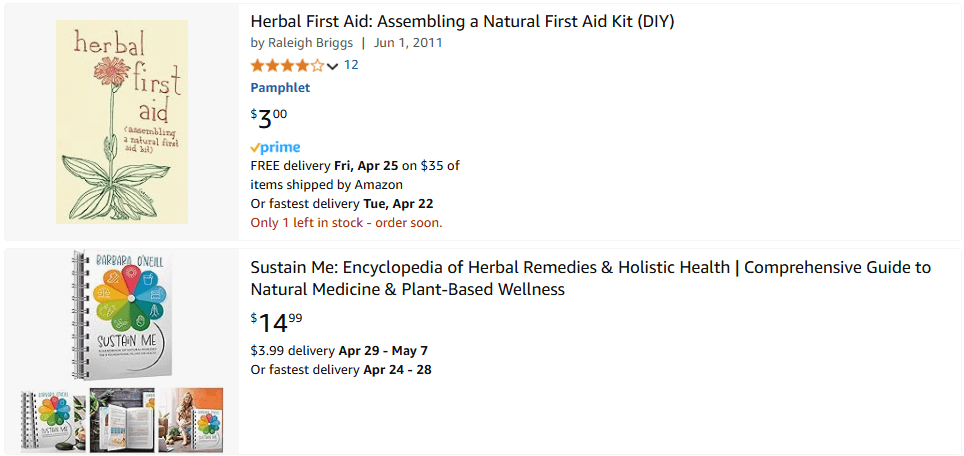
Herbalism is going mainstream. Search interest for “herbal kits” on Pinterest rose by 60% last year, and the demand for natural, DIY wellness is rising, especially among Millennials and Gen Z.
People are turning to tincture-making kits, salve recipes, and home apothecary sets not just to heal, but to reconnect with nature. Yet despite the interest, ecommerce platforms are surprisingly sparse in quality kits. This is a great niche if you can offer guidance and not just goods.
8. Smart Home Accessories for Renters
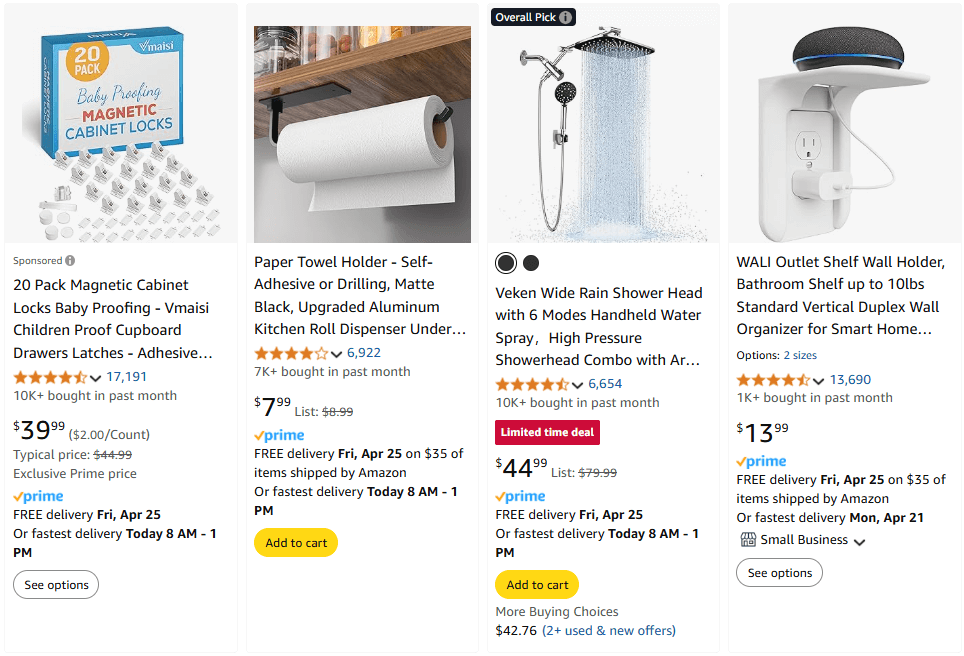
Everyone wants a smart home, but not everyone can drill holes in their walls. That’s the renter problem—and the niche.
Peel-and-stick motion sensors, plug-and-play light strips, voice-controlled devices with no installation required. These are lifesavers for people who want innovation without a lease violation. It’s a clever bridge between convenience and practicality, and most big brands don’t niche this specifically.
9. Ethical Baby Products

Parents are more mindful than ever about what touches their baby’s skin and what gets left behind in the landfill. Cloth diapers, BPA-free teethers, bamboo wipes—these aren’t fringe products anymore.
They’re becoming the new standard for conscious parenting. But big retailers still focus on mass-market convenience. That leaves tons of room for niche online stores that speak directly to value-driven families. If you can offer transparency and quality, you’ll stand out fast.
10. Niche Stationery for Hobbyists

This one’s close to my heart. I worked with a seller who launched vintage stationery sets for fantasy lovers—complete with wax seals, custom DnD character sheets, and aged-looking scrolls. Within six months, they were clearing five figures just from Instagram reels and Etsy.
Why? Because stationery is personal, and hobbyists love tools that make their world feel more immersive. Bullet journaling, calligraphy, game-themed planners. This space thrives on creativity and community.
Micro-Niche Ideas to Explore
If you’re not ready to dive into a massive market, micro-niches are your sweet spot. These are focused, underserved pockets with high demand, passionate buyers, and—most importantly—low competition.
I’ve seen clients succeed in these spaces with small product lines, minimal ad spend, and loyal repeat customers. Here are a few micro-niche ideas that are worth exploring.
Solar-powered outdoor gadgets are gaining traction fast among eco-conscious campers, digital nomads, and adventure seekers who need to stay charged on the go. These aren’t just gimmicky items. Think compact solar panels, lanterns, and USB chargers that actually work.
Minimalist camping cookware is another hidden gem. People who travel light and live out of one bag love foldable, stackable, and space-saving cookware that doesn’t sacrifice function. Then there’s the growing demand for ADHD productivity tools.
These include visual planners, fidget timers, and workspace aids built with neurodivergent users in mind. I’ve had clients tap into this community with real success, especially when their product design actually considers how people think and work.
Plant-themed gift boxes also hit that emotional sweet spot. Imagine botanical stickers, succulent mugs, journals, bundled into thoughtful packages that feel more personal than generic gifts. Smart cycling accessories are booming too.
Urban cyclists are now spending on GPS trackers, safety lights, and phone mounts that upgrade both style and safety. And speaking of underserved communities, left-handed creatives often struggle with regular notebooks and tools.
Art supplies designed for them, like angled calligraphy pens and smudge-resistant markers, fill a surprisingly deep need. Lastly, custom keycaps for mechanical keyboards have exploded in popularity.
Online communities on Reddit, TikTok, and Discord are obsessed with aesthetics, and they’ll happily pay premium prices for unique, themed keycaps that match their vibe, whether it’s anime, cyberpunk, or cottagecore.
All of these niches have one thing in common: low saturation, high interest, and passionate buyers. That’s the kind of mix that gives small online stores an edge, without the need to outspend the competition or chase saturated trends.
Should You Go Niche in 2025?
Absolutely. In a world where algorithms reward specificity, low competition niches are your unfair advantage. You don’t need to reinvent the wheel. You just need to sell it better, to the right audience, in a less crowded lane.
I’ve worked with online sellers who felt like they were shouting into the void—great products, solid branding, but stuck in saturated markets where bigger players always had the louder megaphone. The game changed the moment they shifted into low competition niches.
Suddenly, their ads got cheaper, their SEO climbed faster, and their messaging actually landed. Why? Because they stopped trying to speak to everyone and started speaking directly to their people.
The best-performing stores I’ve worked with didn’t chase trends. They created tiny, obsessed followings by knowing exactly who they were for. That’s the power of niche. It’s not about limiting your potential. It’s about owning a space no one else is even looking at.
So if you’re stuck or overwhelmed, take a step back. Find the niche that’s calling your name. And build something small, smart, and unstoppable. Remember, clarity scales. When you go narrow, your results go wide.







